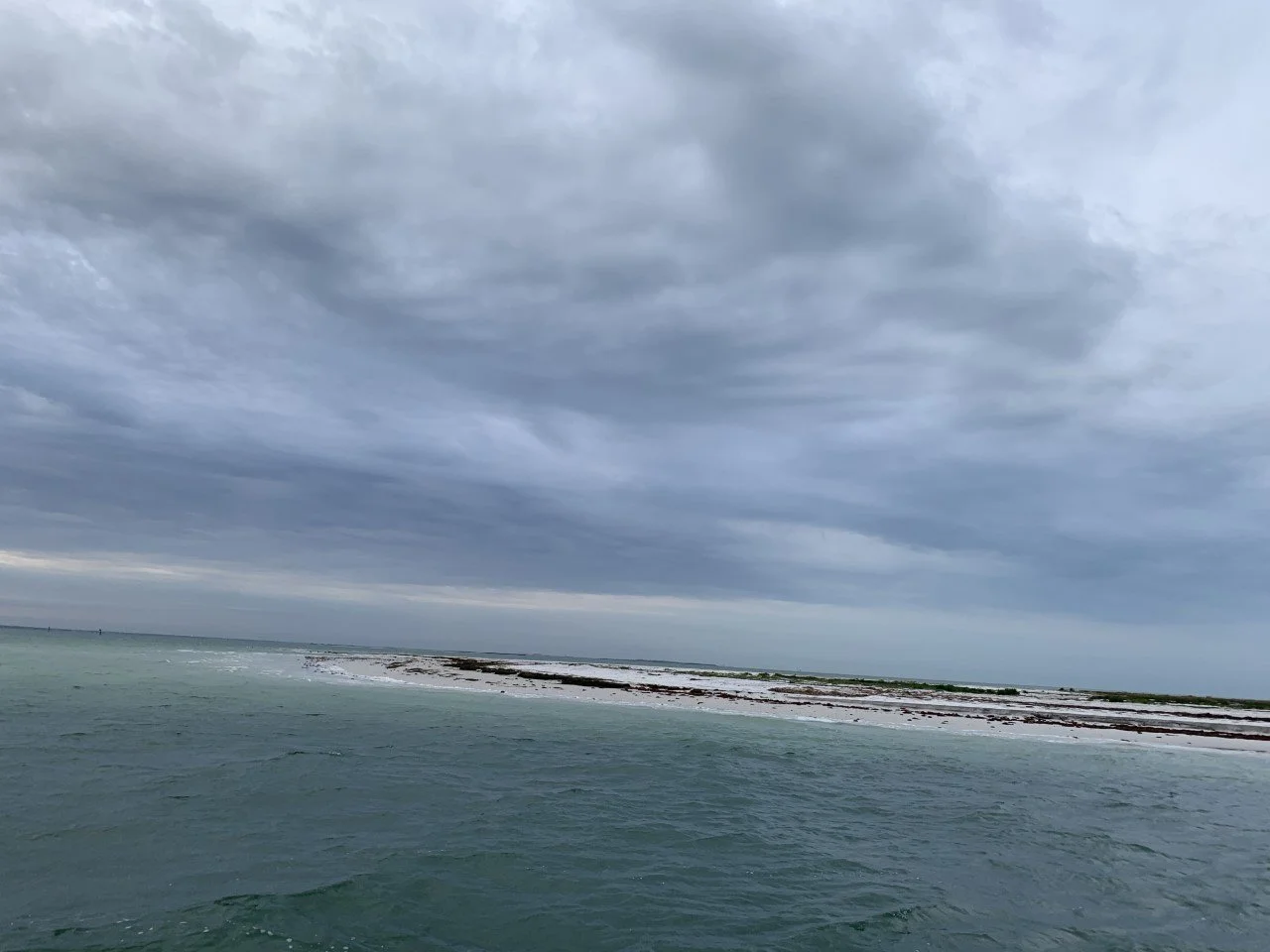A Visit to Anclote Key (March 15, 2022)
Southern tip of Anclote Key Island
Having visited Monty in Texas last spring, I wanted to pay Rose a visit in Florida this year. Rose spends her winters at Anclote Key Preserve State Park, a grouping of 4 islands three miles off the coast of Tarpon Springs, just north of Tampa, in the Gulf of Mexico. A short pontoon boat ride took me, Mia Majetschak and Amy Lardner over to Anclote Key Island. Mia met Monty and Rose in Waukegan, when they nested there in 2018, and helped locate their scrapes. Since moving to Florida, she periodically checks in on Rose and Nish at Anclote during the winter months. Amy has been a volunteer monitor for Monty and Rose in Chicago for the past 3 years and is to thank for the beautiful and meaningful name Nish received in 2020.
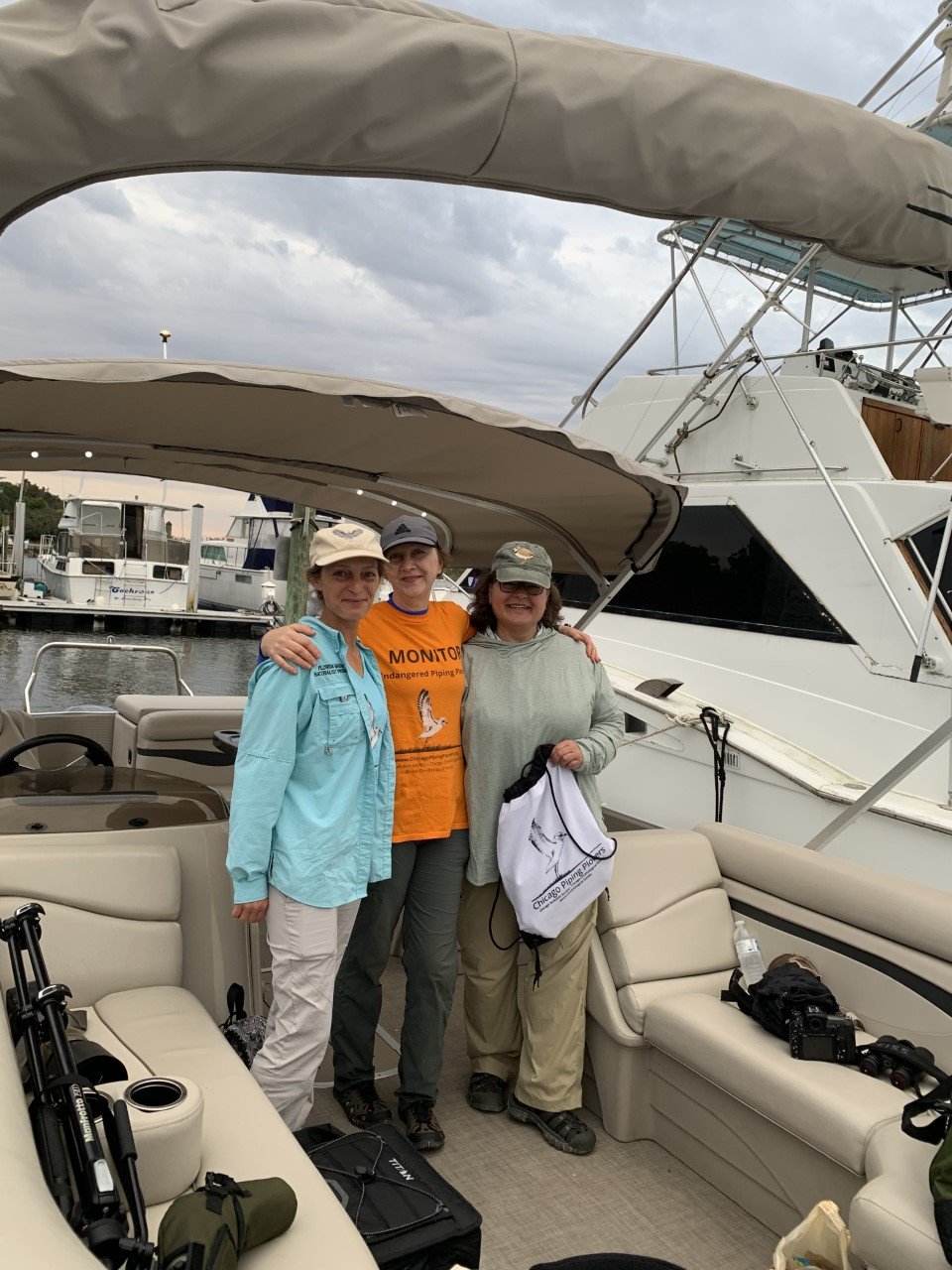


I had imagined that Anclote Key would be all sand from south to north. Not so! Most of the island consists of mangrove trees and only the southern tip consists of sandy beaches.
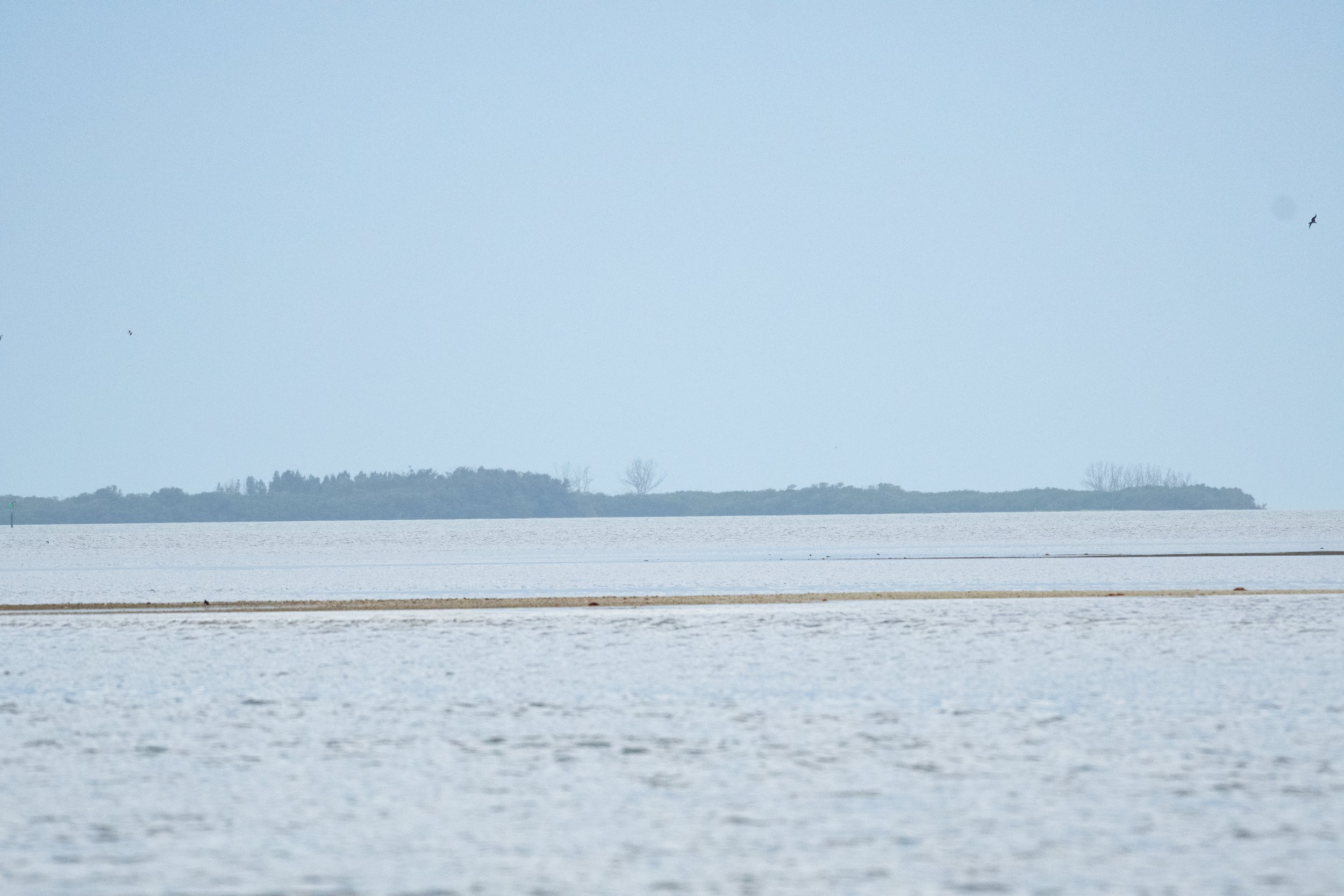

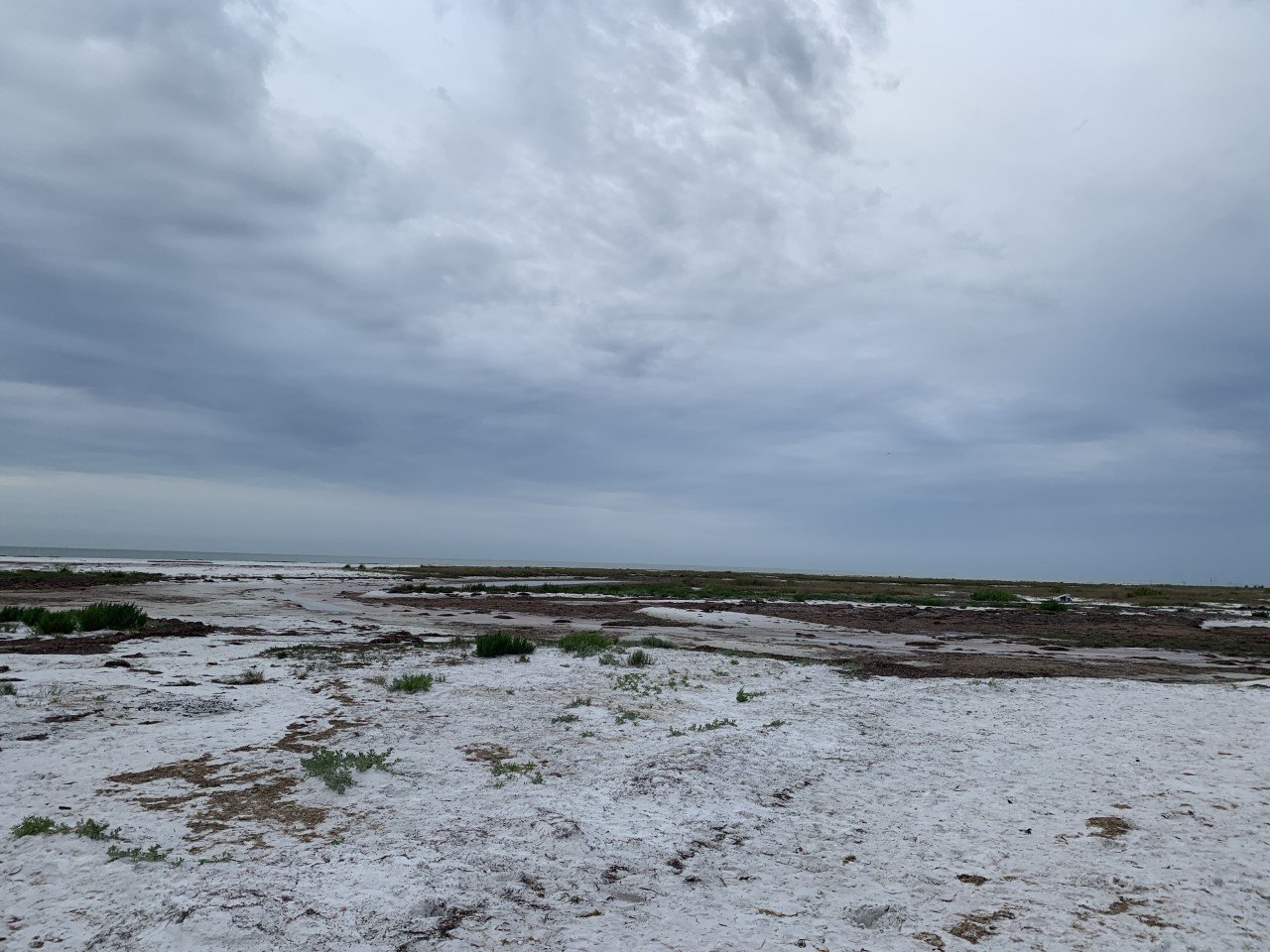
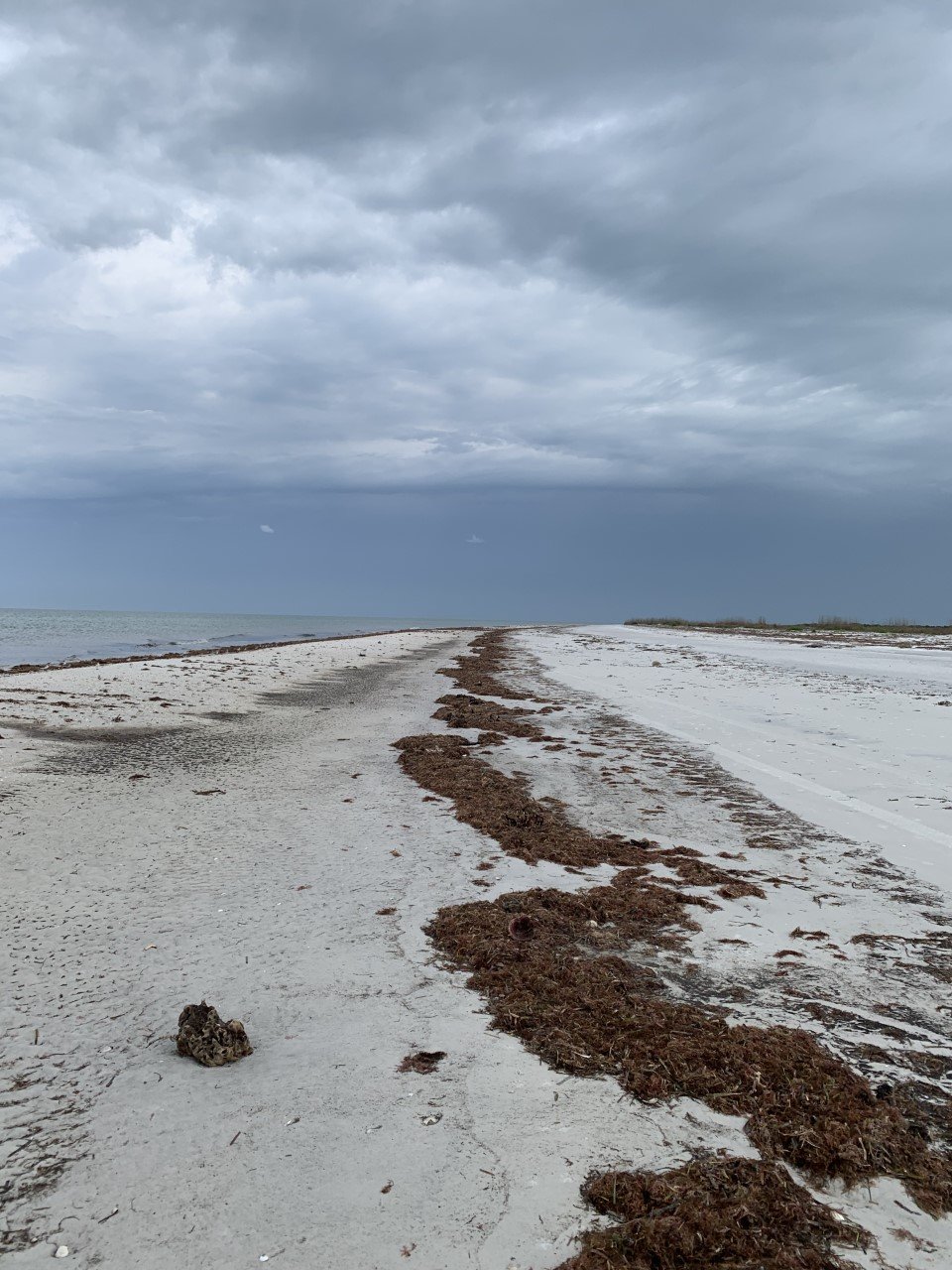
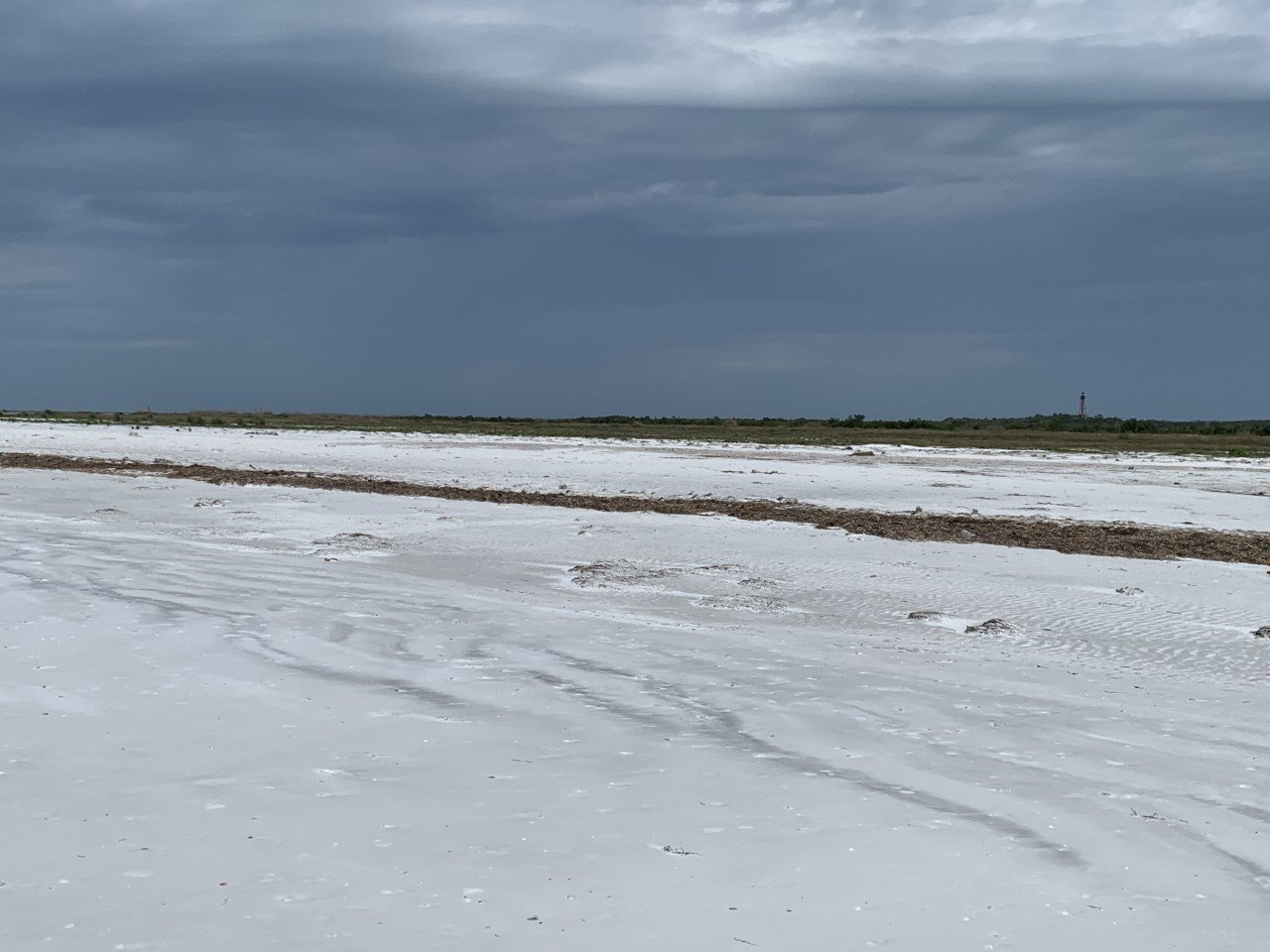

With much anticipation (we’re going to see Rose!) and trepidation (we may not find Rose!), we disembarked on the island. An adult Bald Eagle perched on a sign warned us that alcohol and dogs are prohibited on the island, then lazily took off. Maybe we need a Bald Eagle dog patrol at Montrose?
Bald Eagle
The sand on Anclote Key is much brighter and whiter than at Montrose. Shells of all kind, some intact, most broken, are scattered on the sand. Wrack of seaweed and other organic matter line up the shore, offering a great feeding place for the hundreds shorebirds we encountered. Great feeding, unless there is one of the infamous Florida Red Tide threats under way, in which case the wrack and its content can be lethal to wildlife.
Cockle Shell. Photo: Amy Lardner.
Brown Pelicans, Willets and Dunlins were among our first encounters. The Ruddy Turnstones were out in force, slapping little crabs against rocks to crack them and feed on them. Sanderlings scurried around. A large group of Red Knots, some starting to show hints of red plumage, kept us company as we traveled North on the beach. Black-bellied Plovers were scattered among them. Two Wilson’s Plover were resting in the sand, barely noticeable in the wrack line. We walked north for over 2 hours, at a slow birder’s pace, distracted by birds and shells every few steps, invigorated by the salty air and the sound of waves gently crashing nearby. The sky was overcast, thankfully, as a hot sun would have wilted us fast. Amy spotted a tiny white shorebird scurrying on the beach, a Snowy Plover blending in so well with the sand it was barely visible.

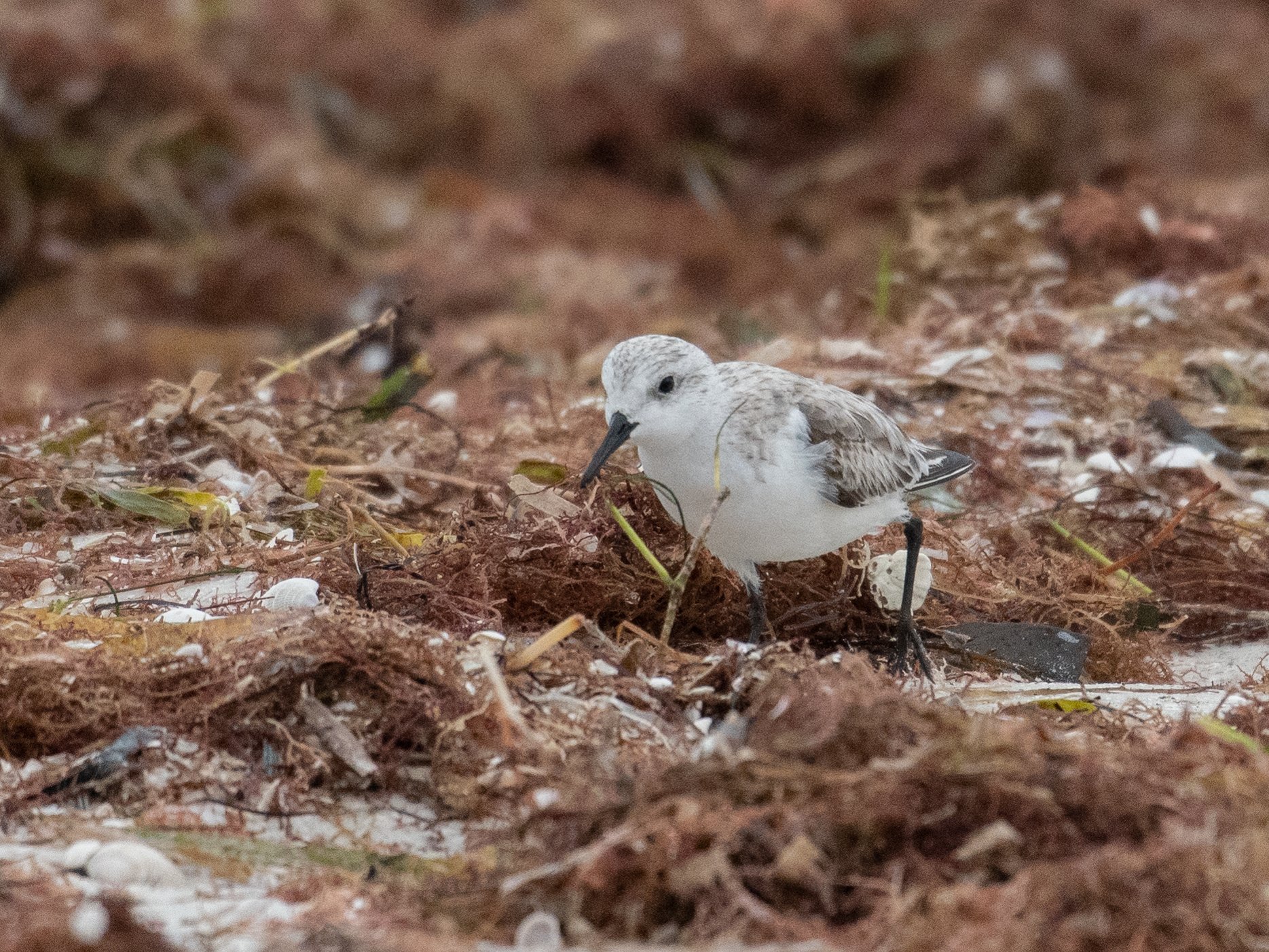
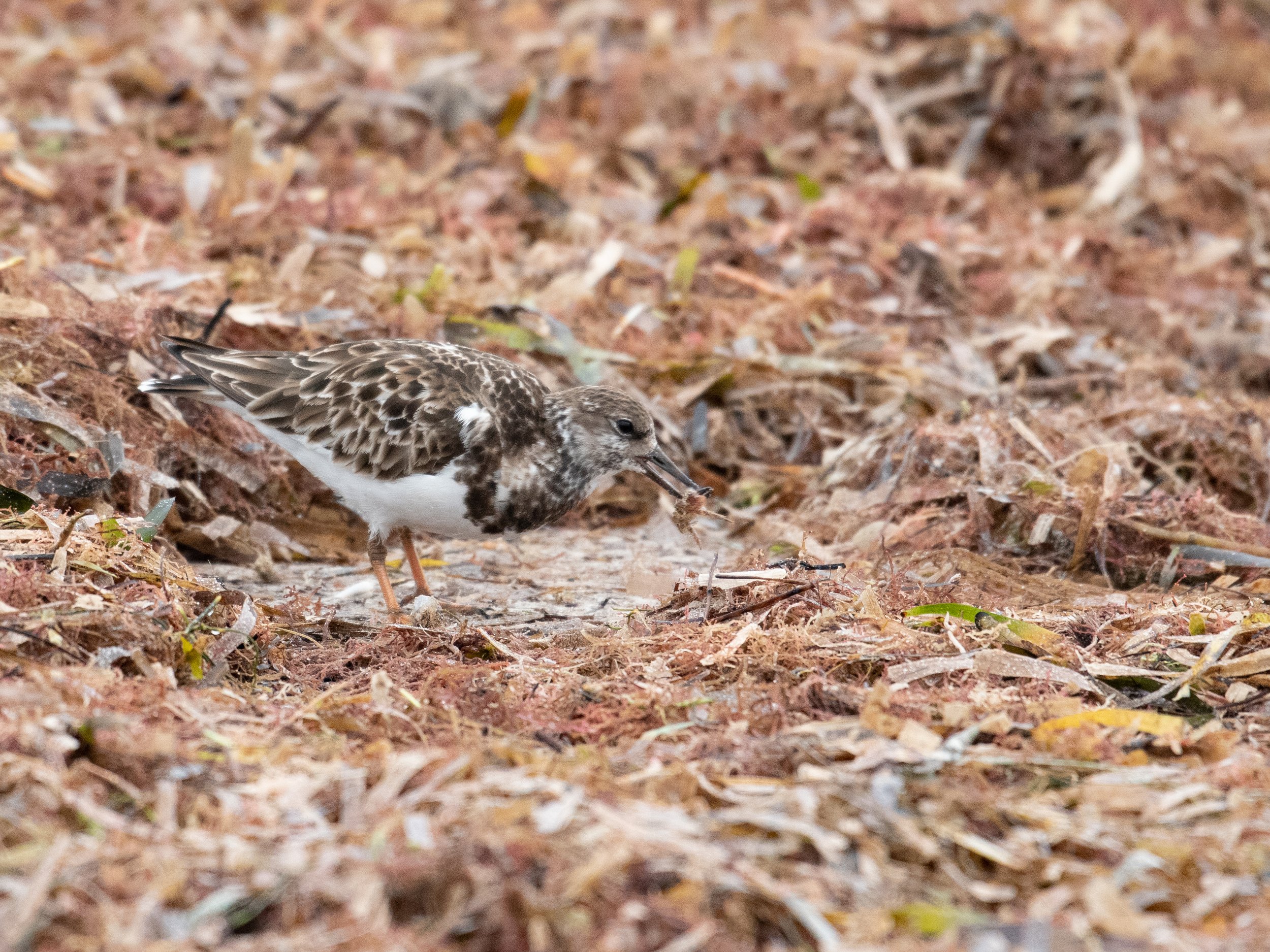
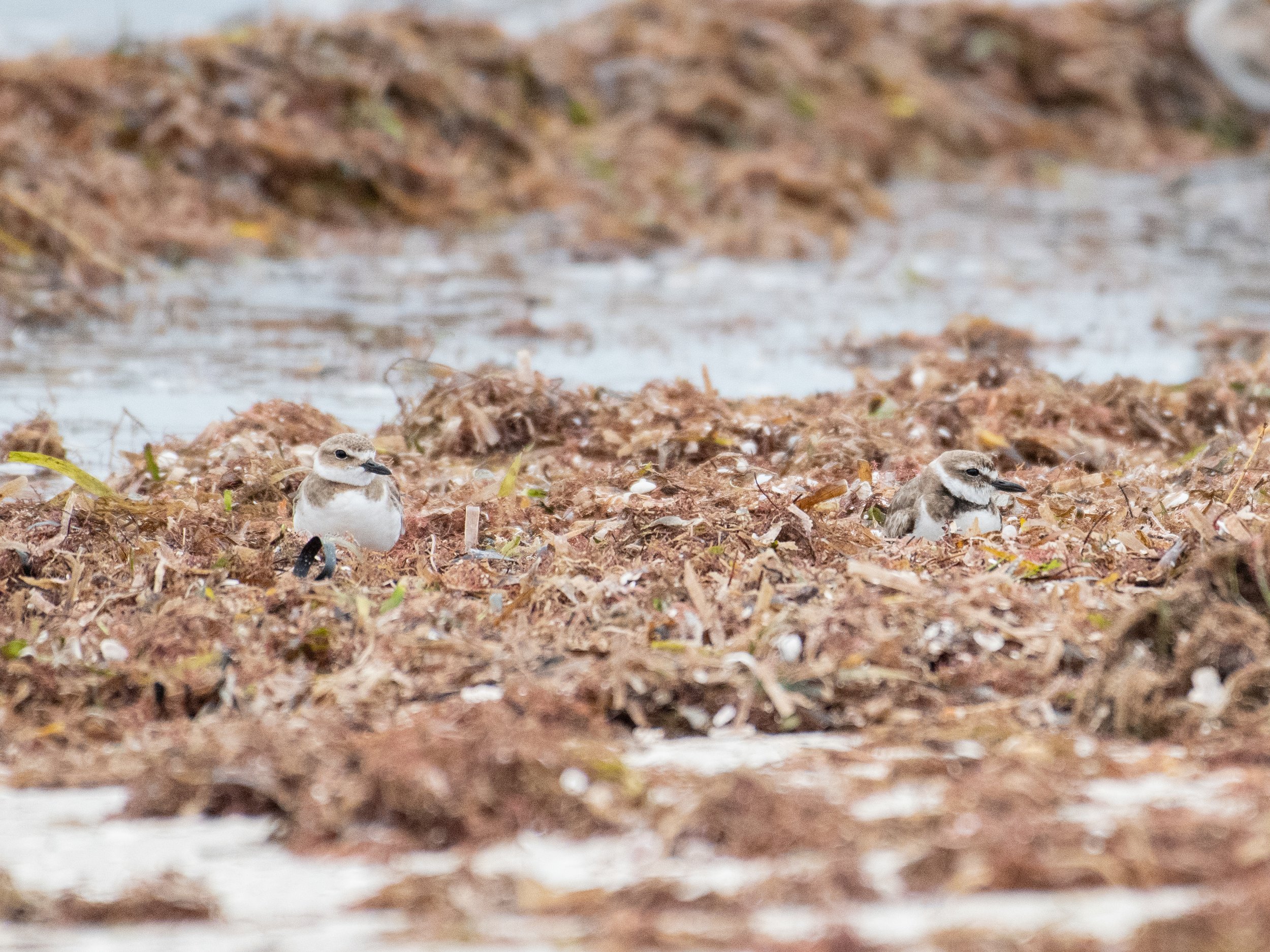
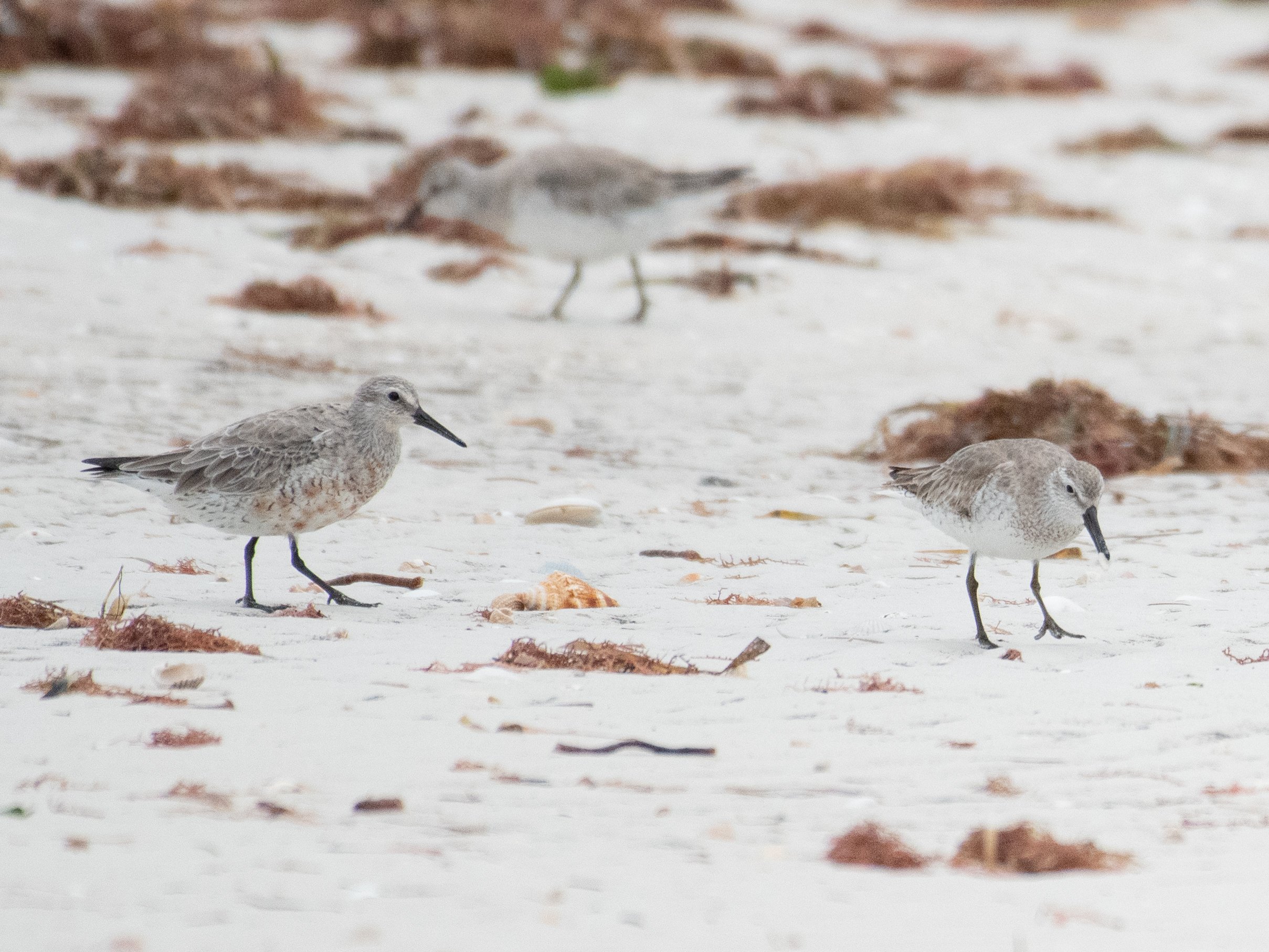
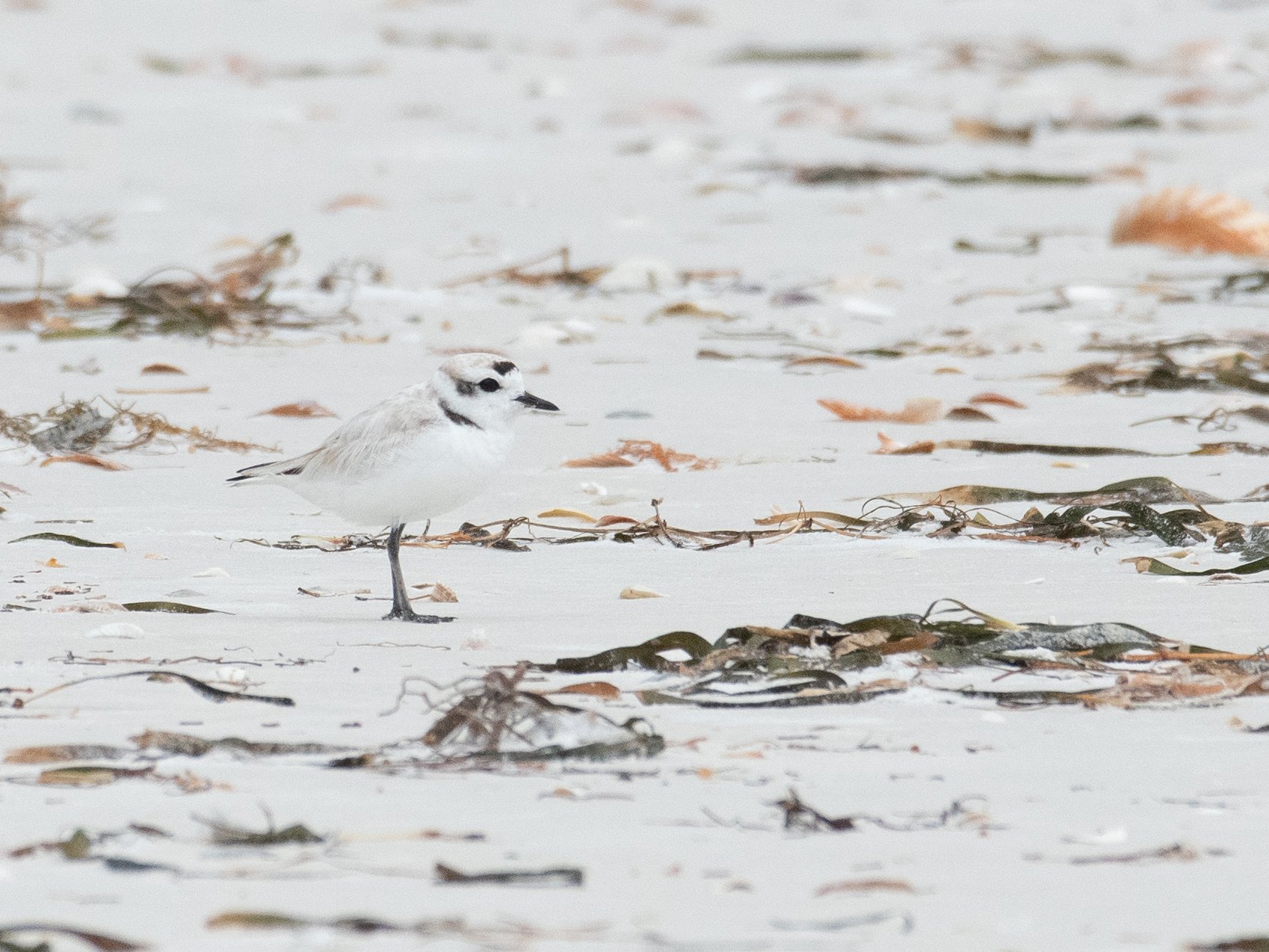
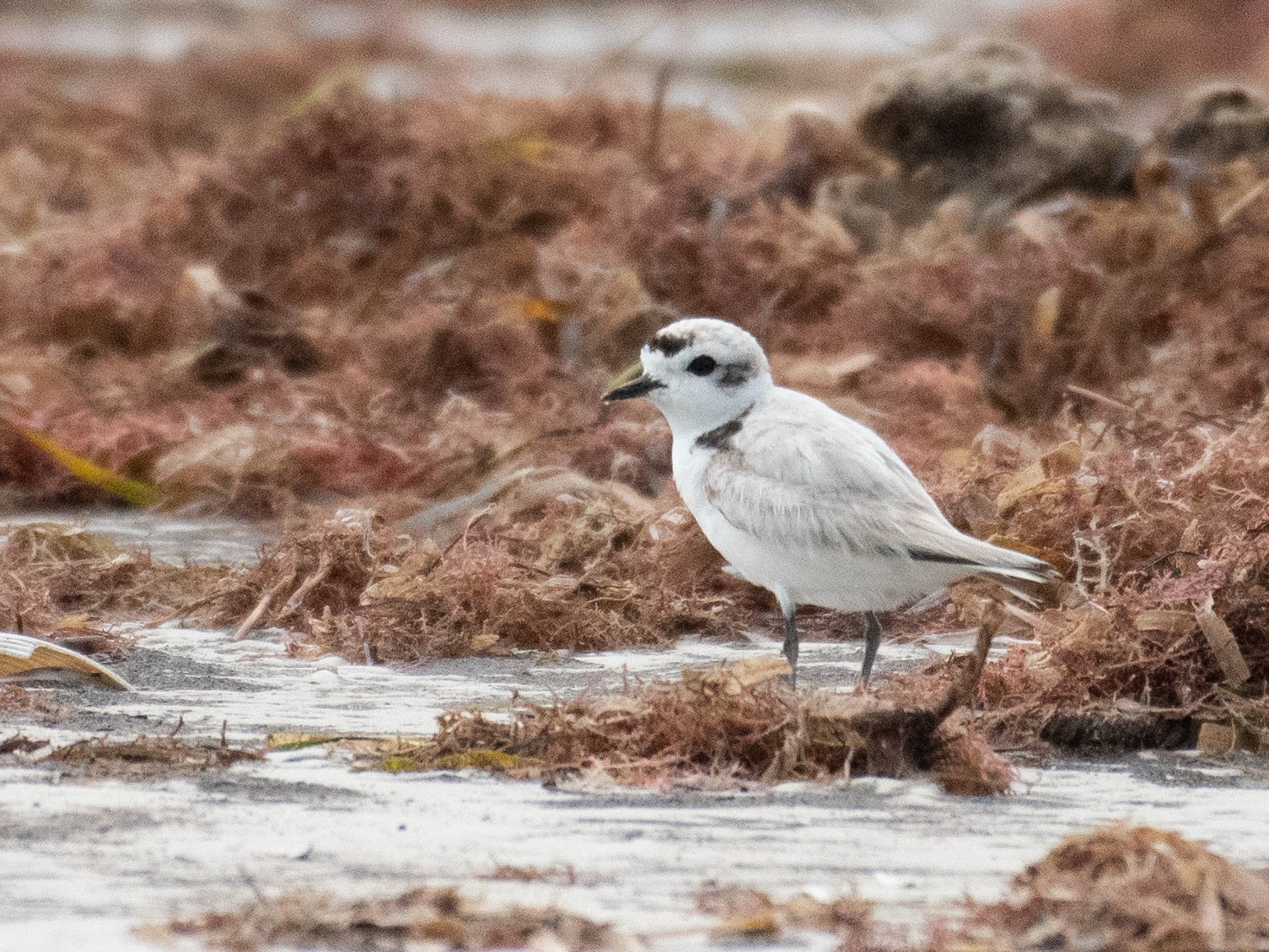
We reached a point where the beach in the distance was starting to give way to Mangroves. We had not seen any Piping Plovers yet. We turned around and stayed closer to the dune side. We could see several herons and egrets on a small inner lake. A Reddish Egret danced for us, while White Ibis, a Tricolored Heron, a Little Blue Heron, Great Egrets and other birds fed nearby.
The wind picked up. We knew a severe storm was brewing further west and would be arriving in the afternoon. The small shorebird species had been mostly absent from our encounters this morning.
To our great joy, a mixed flock soon flew in and landed in front of us, taking shelter from the wind in the dunes. Each little bird, or a group of them, took refuge behind a plant, a small rock or a little mound in the sand, to avoid the brute force of the wind. Our faces lit up: among the Semipalmated Plovers and Western Sandpipers, 21 Piping Plovers awaited to be scrutinized for bands. Would Rose and Nish be among them?
Our cameras went to work, clicking away. The most expedient way to identify bands is to take photos of legs and bands and look at them. We worked through the area, excited every time we came upon a banded Piping Plover. We were careful to not flush them. This felt a bit futile when a tourism boat arrived, and some 20 tourists disembarked with little mesh bags, eager to collect shells on the beach. They marched through, oblivious to birds and wildlife. Some came back in the dunes where we were and scattered the resting birds. Sadly, this occurs 4 times a day, once every 2 hours.
We accounted for six banded Great Lakes Piping Plovers, among them “Herb”, “Give” and “Little Ontario Boy”. It was fascinating to observe the contrast between the banded Great Lakes Piping Plovers and the unbanded, presumed Atlantic Piping Plovers, the latter sporting fresh breeding plumage in preparation for their imminent migration to the Atlantic coast, the former still in non-breeding plumage, 3-4 weeks away from migration. We did not see Rose or Nish, but, as much as we would have loved to see them, none of us felt really sad about it. We knew we had a 50/50 chance of encountering them based on Mia’s prior visits. For Amy and me, who had traveled from Chicago, we felt fulfilled to have experienced Rose’s winter home. In contrast to Monty’s winter location in Texas, which resembles Montrose on an uber scale, Rose’s winter spot is remote, deserted (other than the daily boat trips), devoid of buildings, cars, people, dogs and music. It gave me perspective on how unsettling Montrose’s crowds and noise may be to her at times. She is more likely than Monty to stay clear of people, and over the years, she has disappeared from sight, likely finding a place for a bit of solitude and quiet.
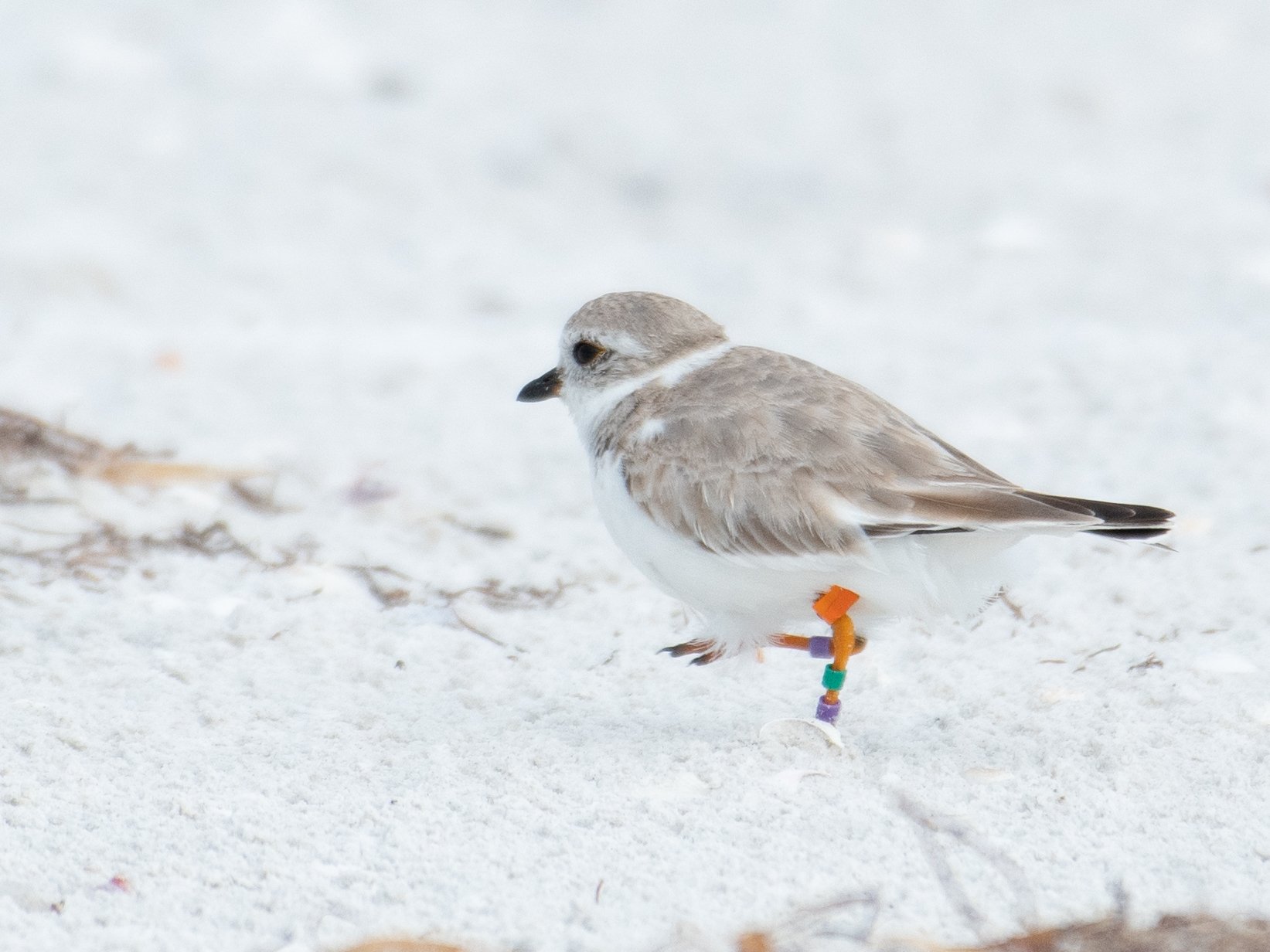
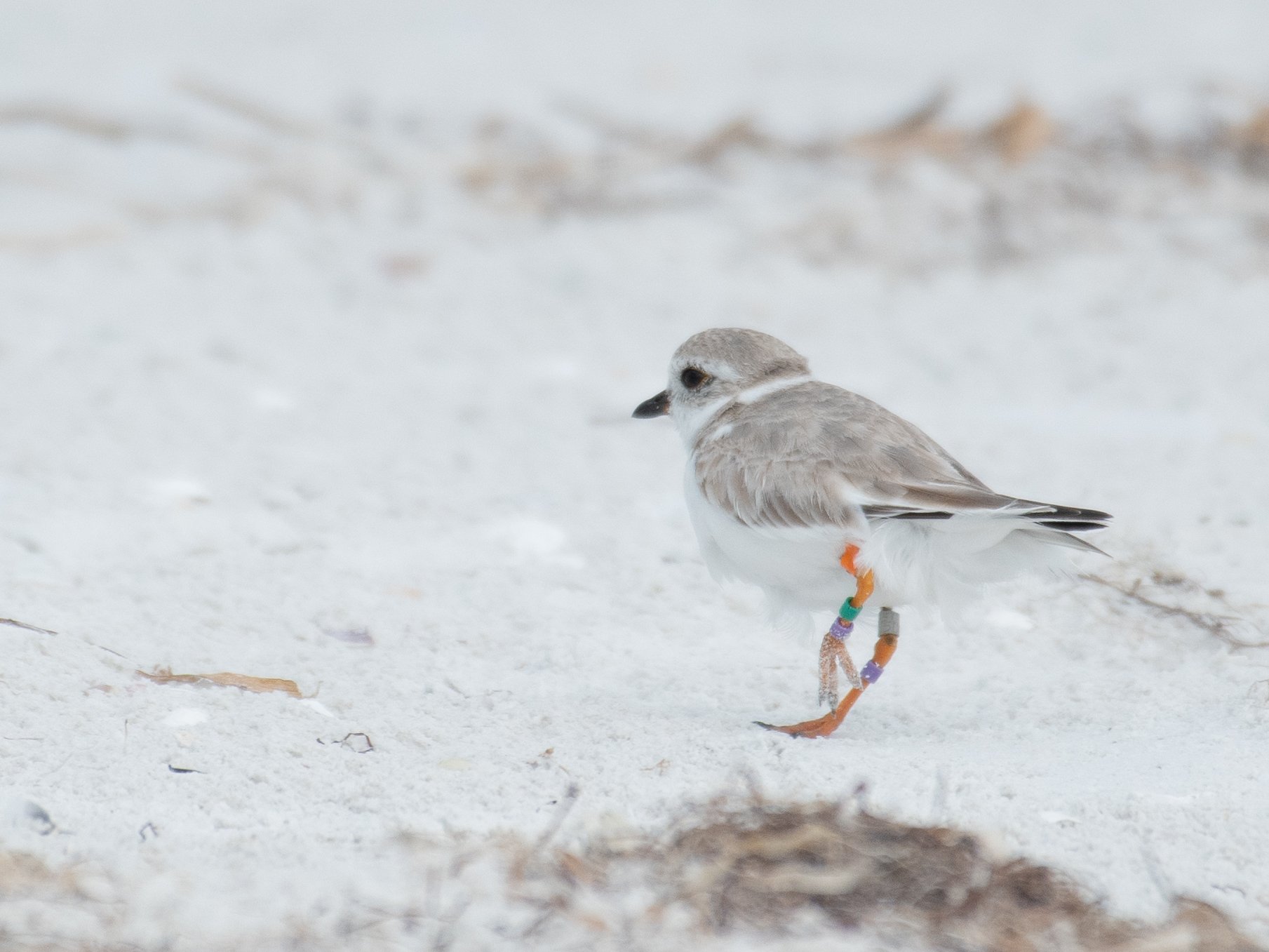
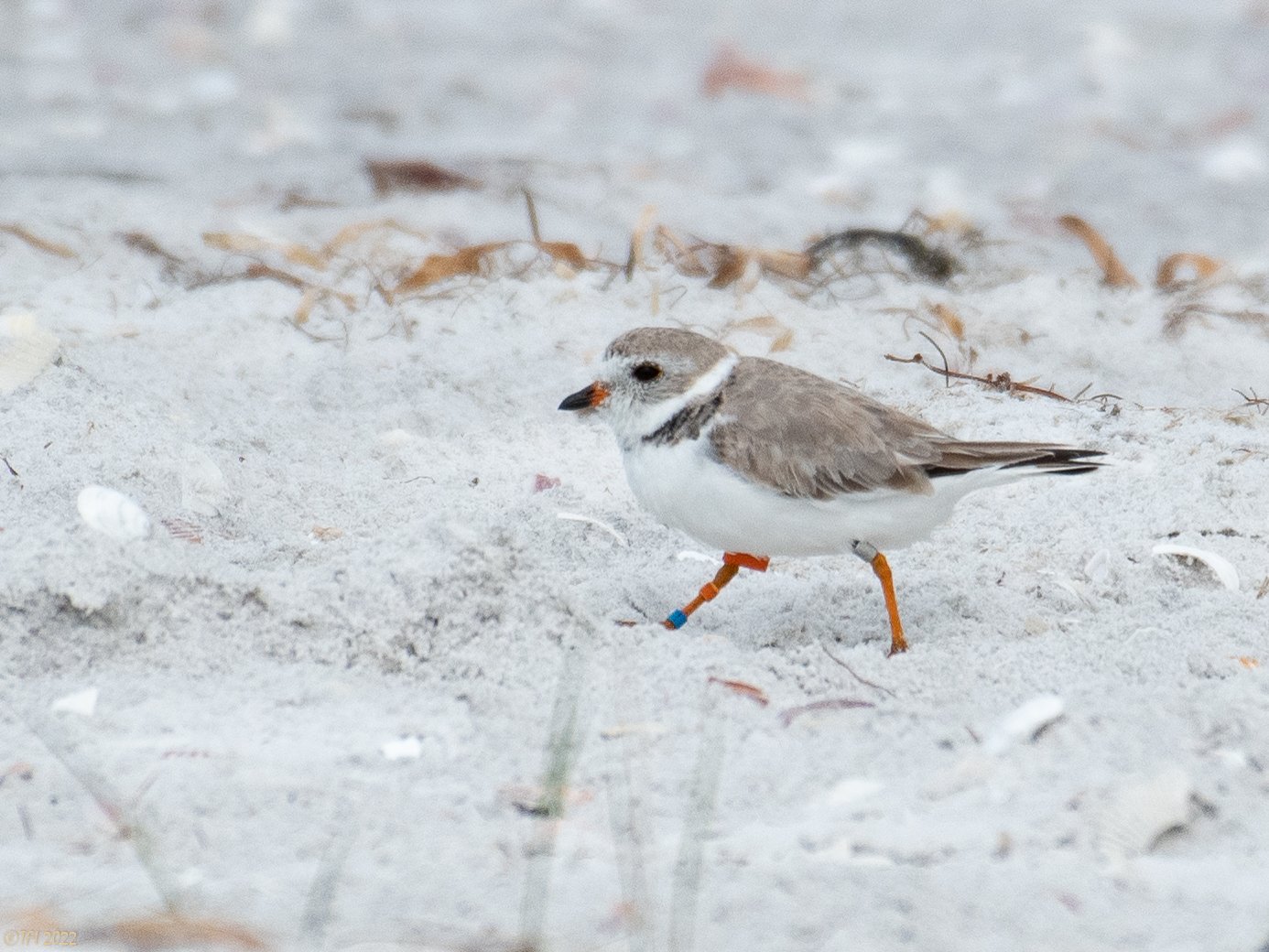
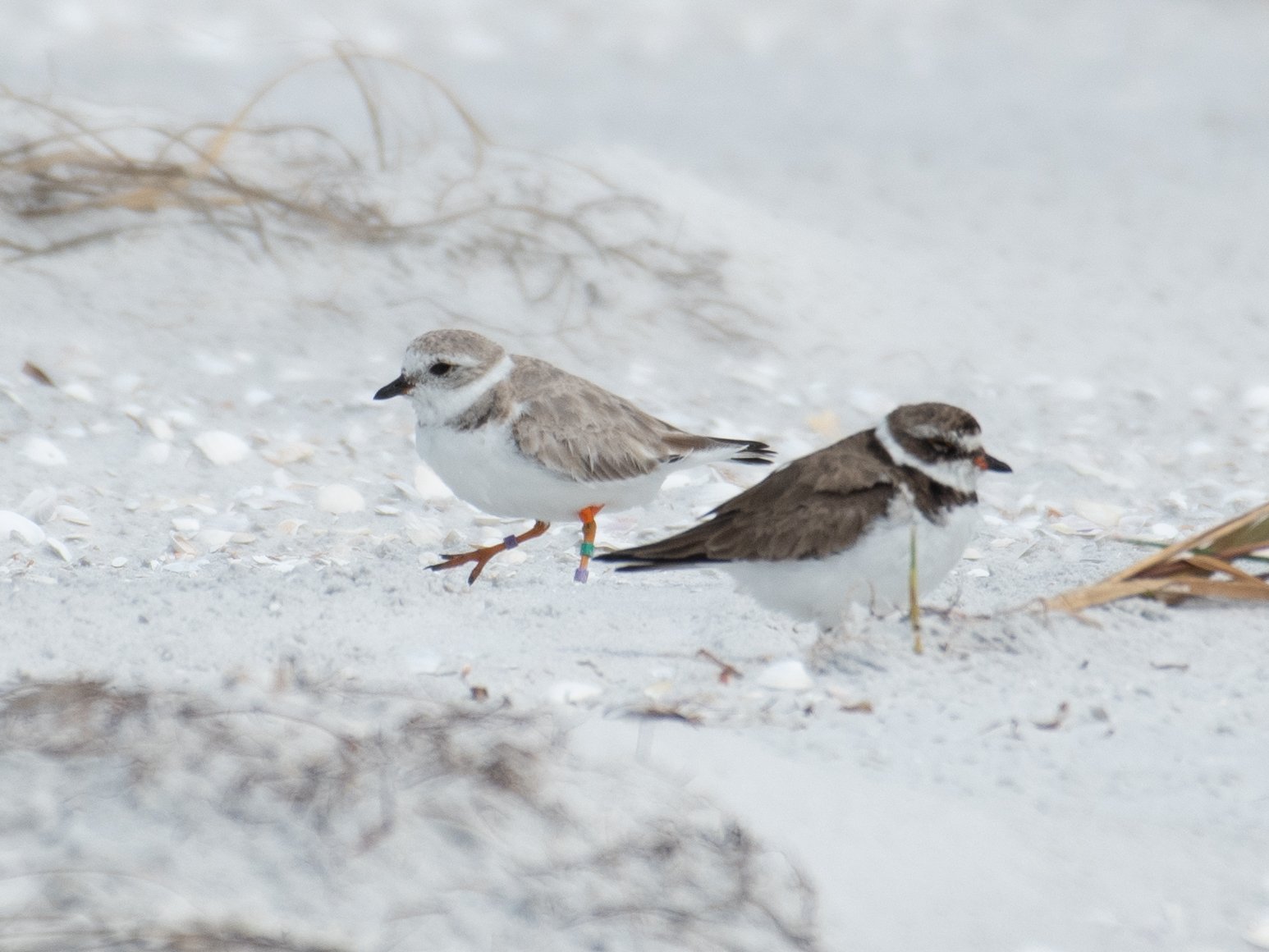
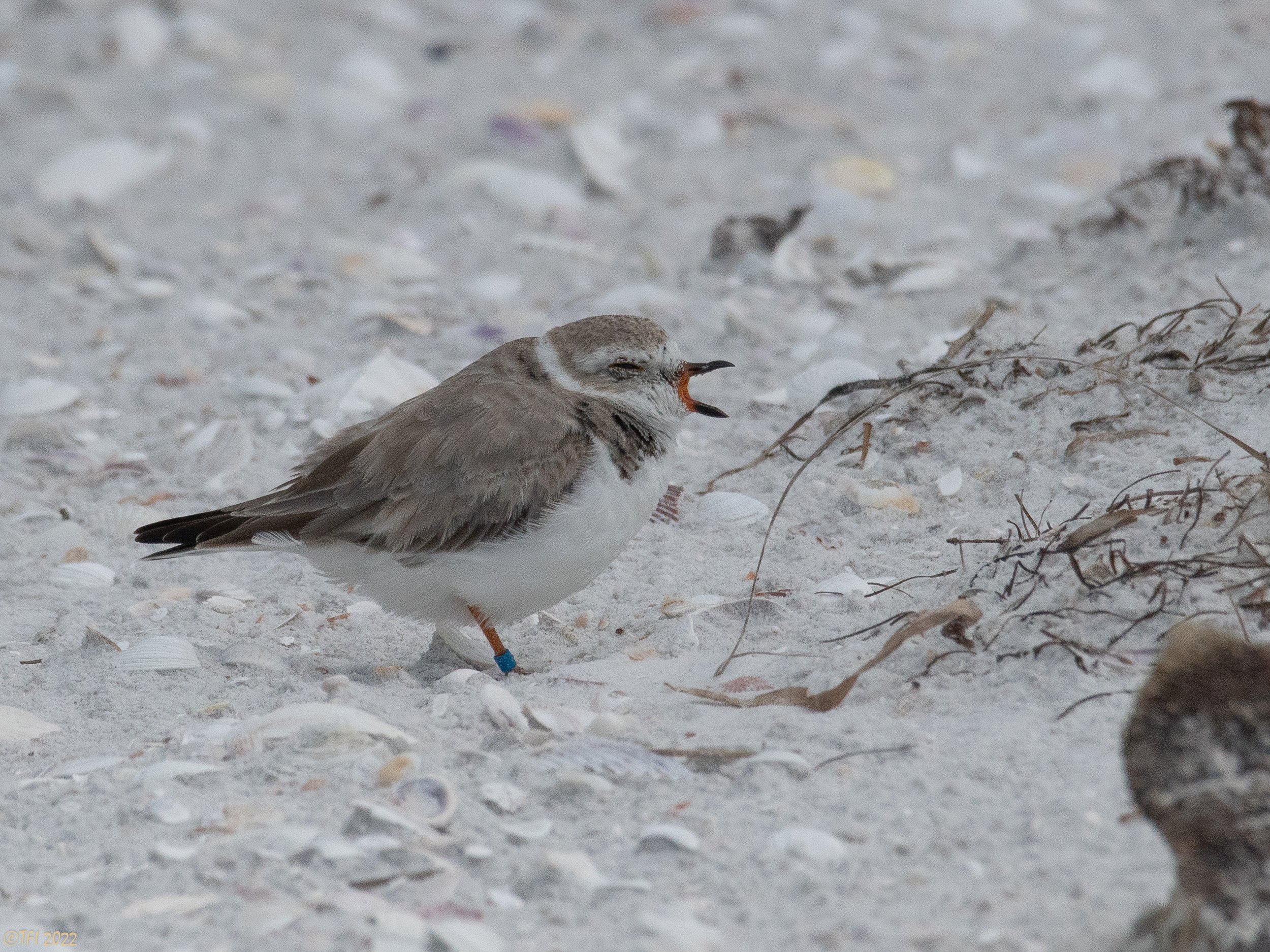
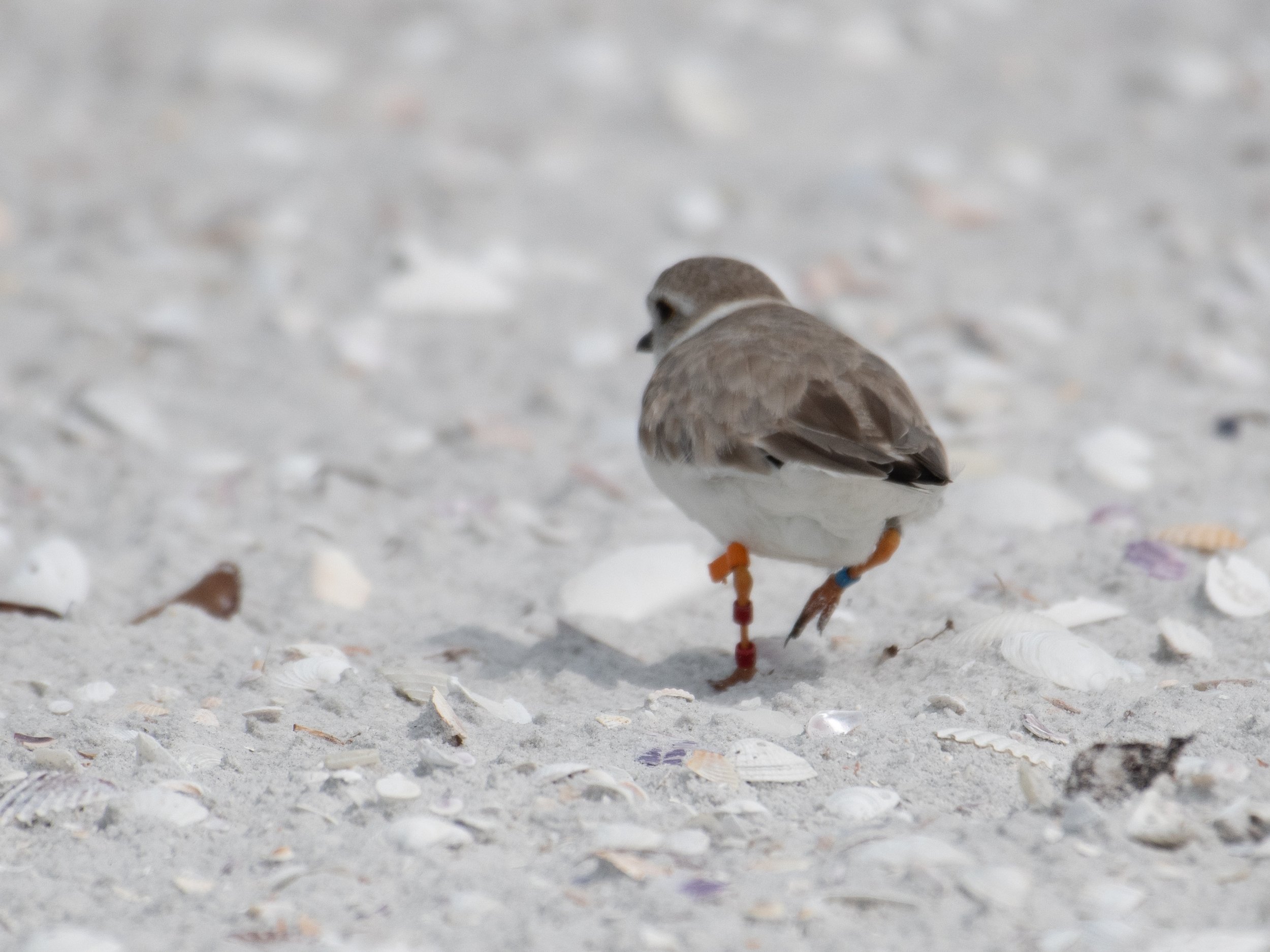
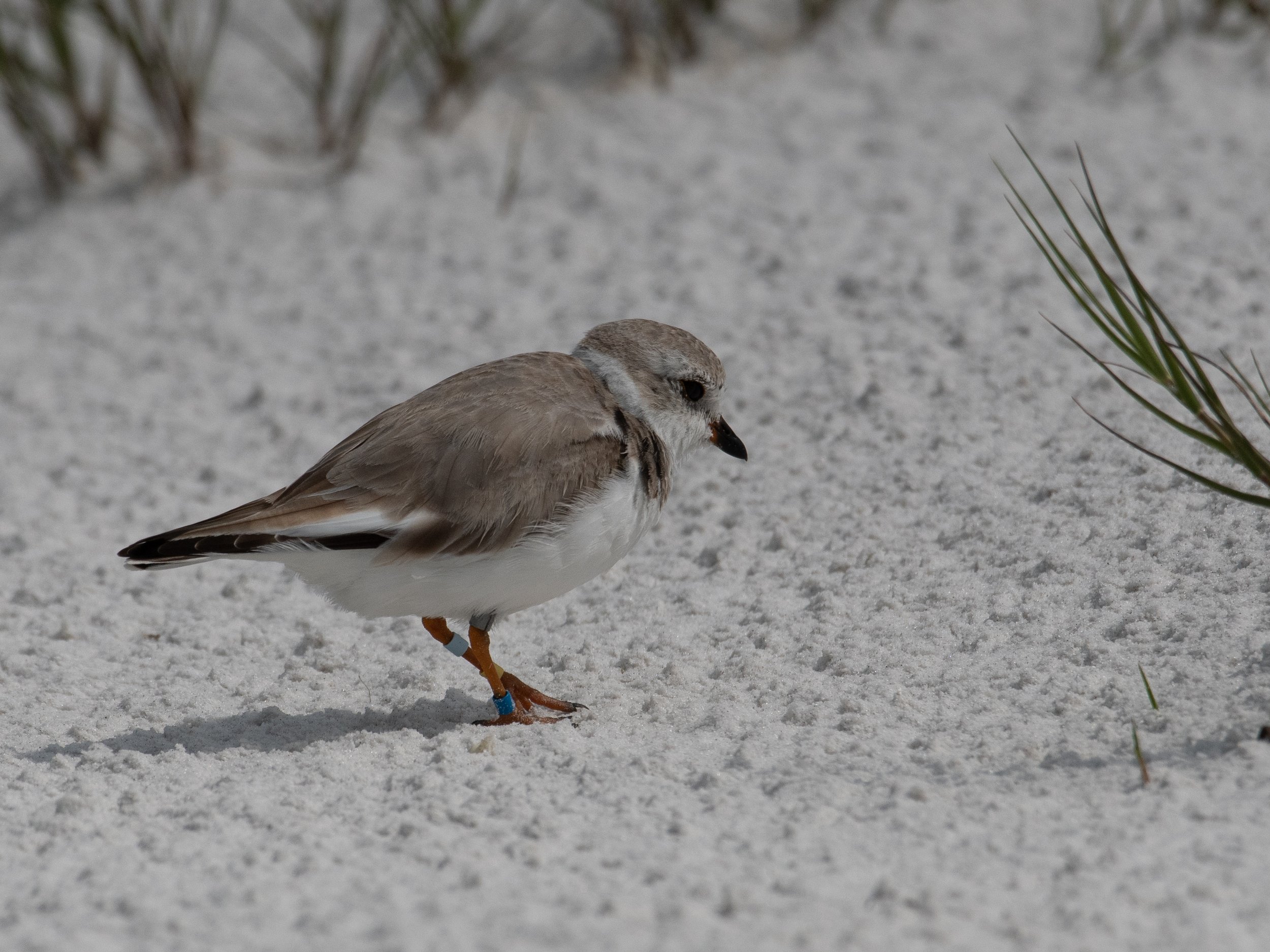
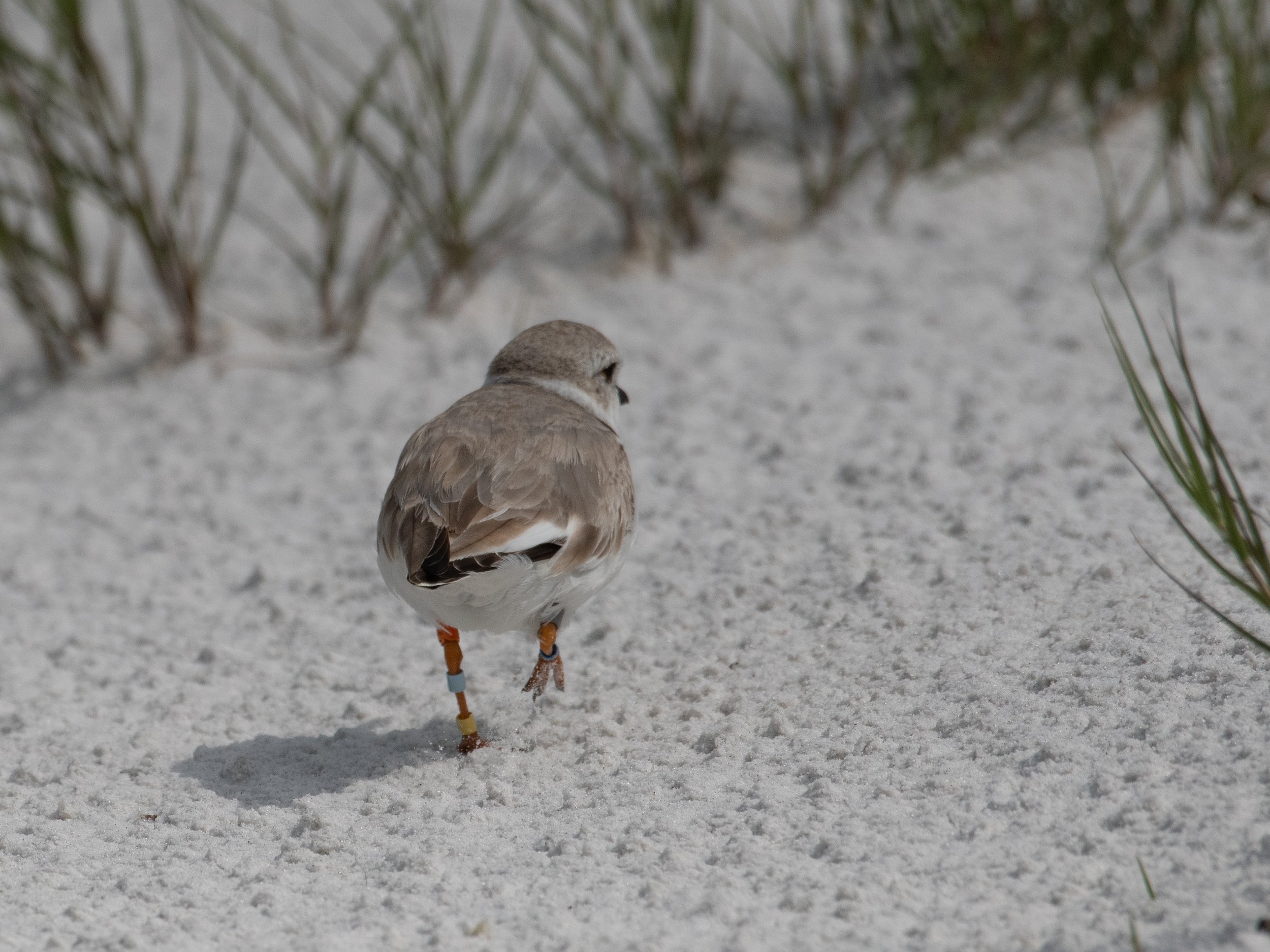
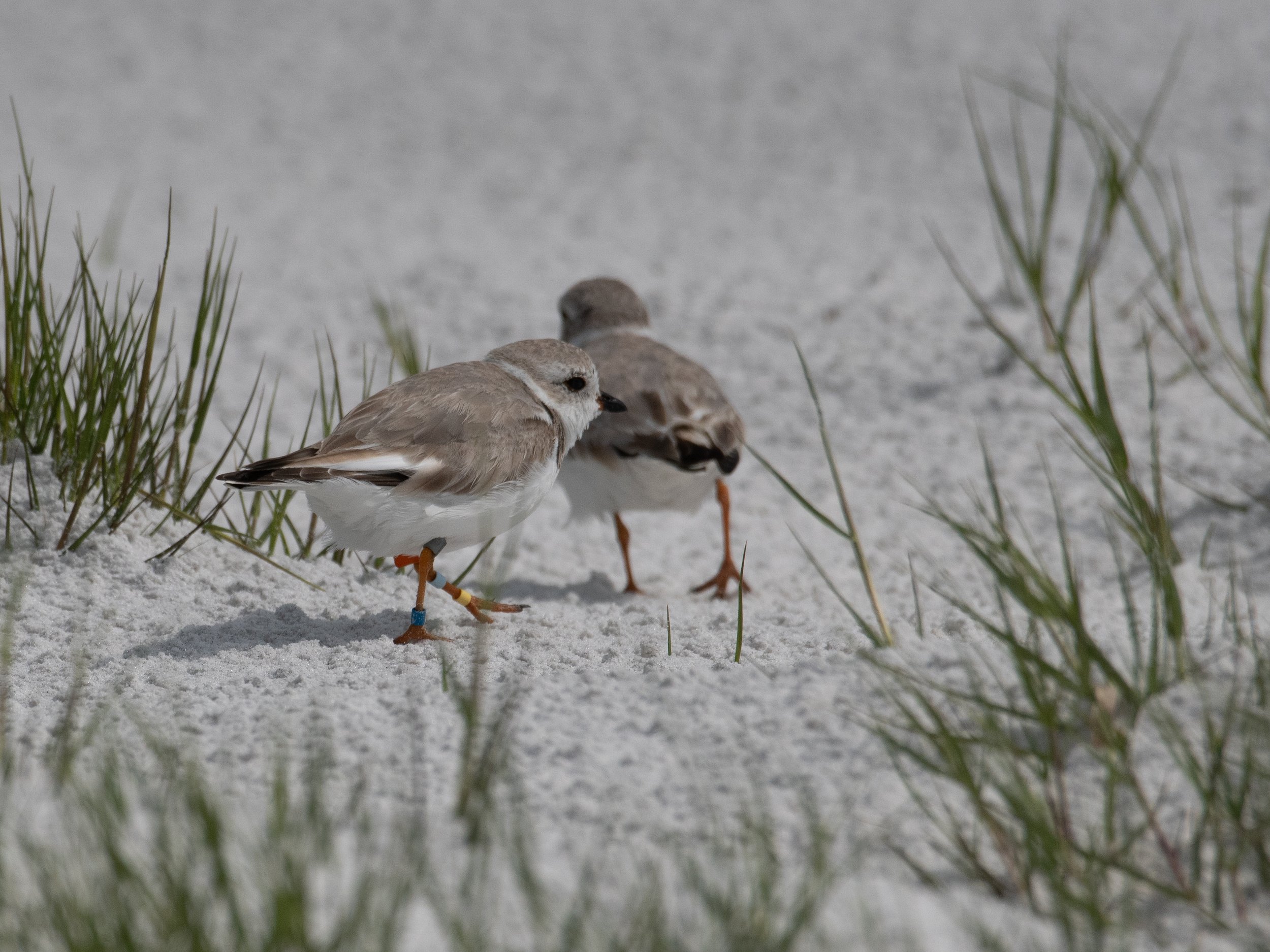
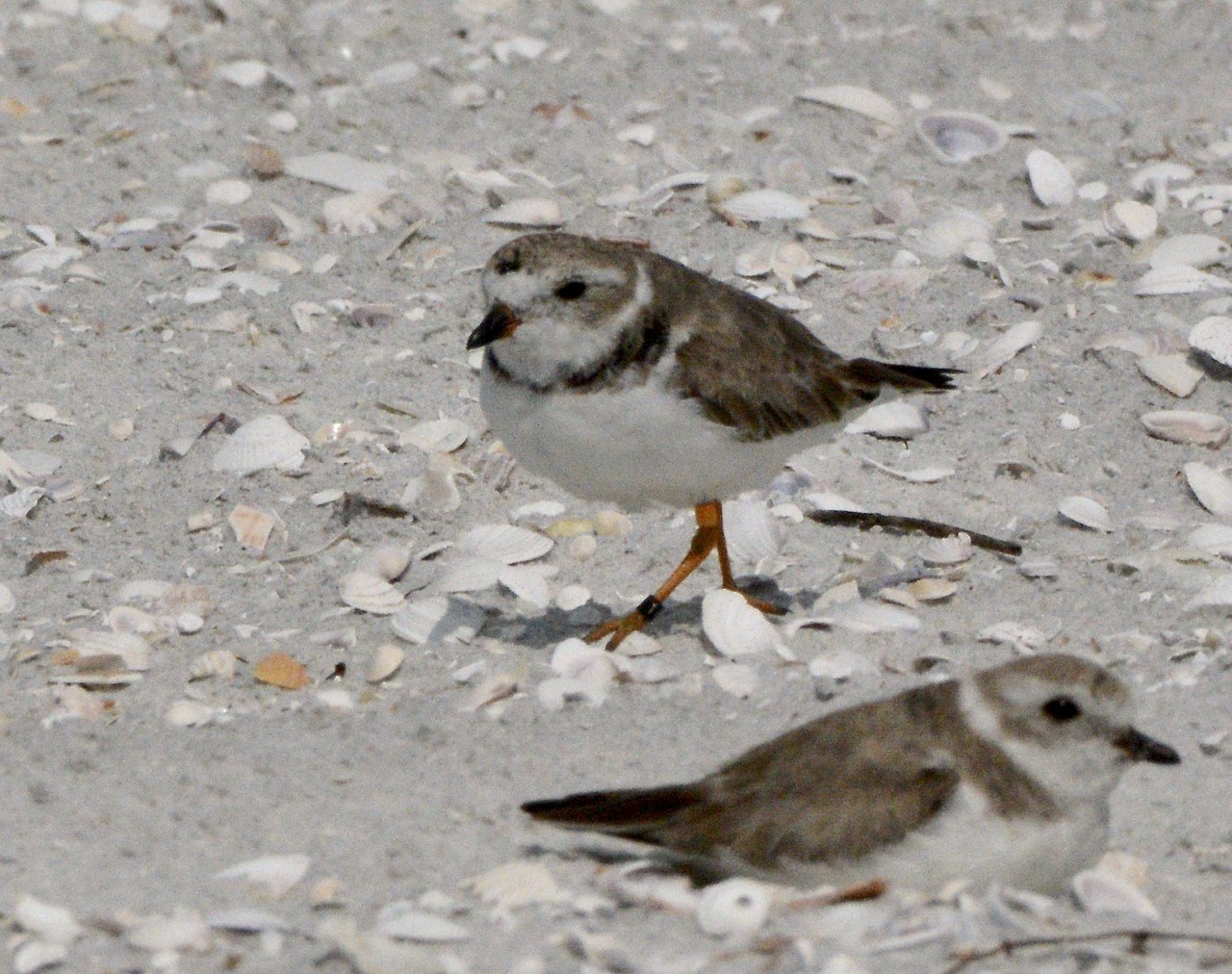
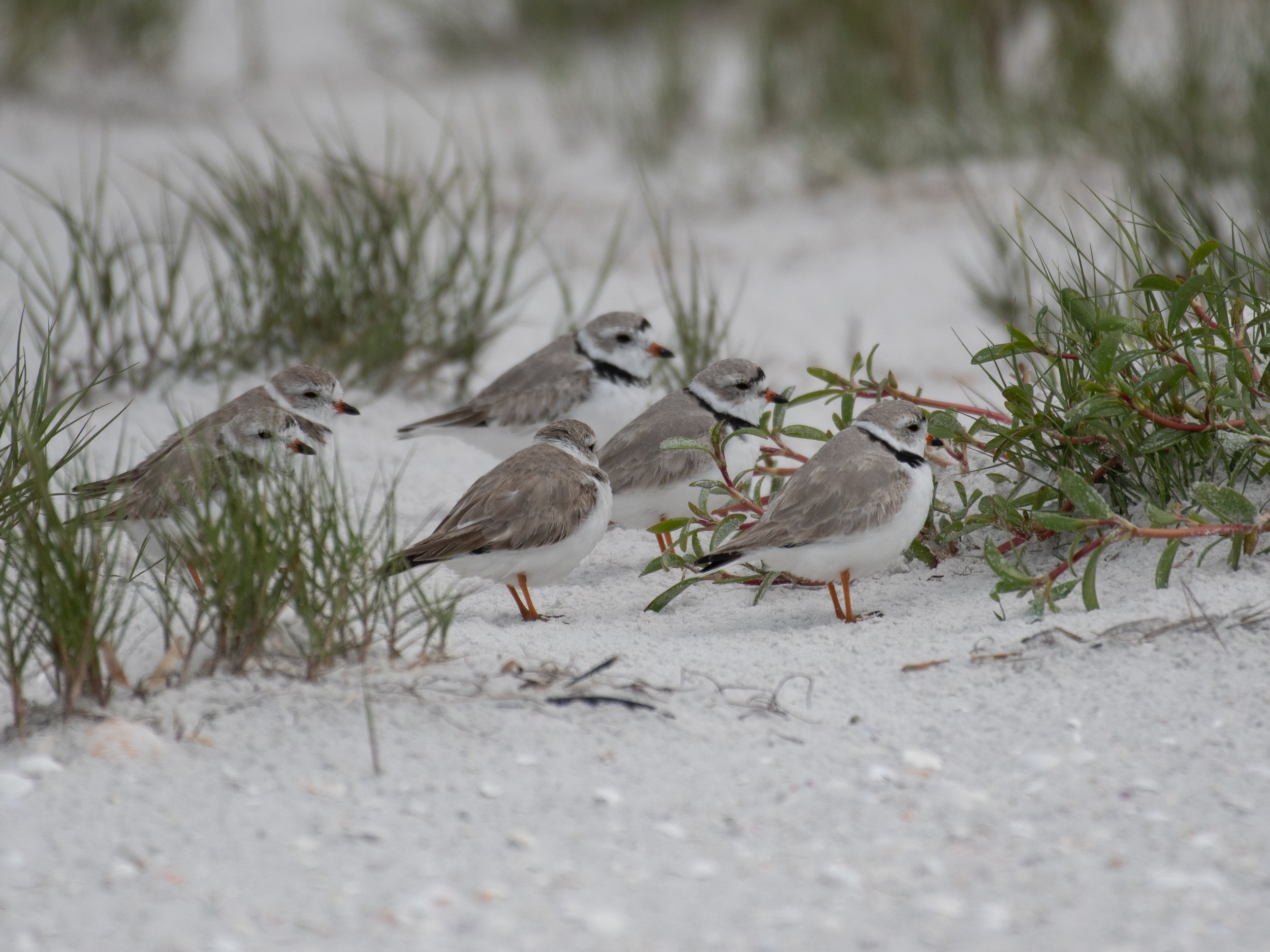
Photos: Give (Of,G,V:X,V, 2020 Sleeping Bear Point hatch), Young Ontario Boy (X,-:Of,O,B, 2018 Wasaga Beach Ontario hatch), Herb (Of,R,R:X,B, 2020 Sleeping Bear Dunes hatch), Of,b,Y:X,B (2017 female, Sleeping Bear Dunes hatch), O,L:X,- Yellow dot, L102 (2019 hatch Sandy Island Beach, NY; photo credit: Mia Majetschak). Also seen was a Wisconsin Long Island Apostles National Lakeshore hatch. The last photo is of unbanded, presumed Atlantic Piping Plovers. Note how much further along their breeding plumage is.
Habitat destruction in Florida is extensive and ongoing at a high pace. As we traveled through the western part of the state in the days that we were there, we witnessed countless lots of beautiful wooded land being cleared for construction or offered for sale, hundreds and thousands of acres at a time. Florida Scrub Jays, Red-cockaded Woodpeckers, Bachman’s Sparrows and other species that call Florida home are struggling and endangered. Mia shared that even Laughing Gull colonies that were very stable in the past are now plummeting. People are not only building on the beach, there is a tendency to shoo birds away to prevent them from nesting on a beach in front of a fancy resort of an expensive villa or condominium tower. The retiree movement to Florida is undoubtedly having a profound ecological impact on the state, aided by lack of strong environmental governance. It was an unsettling visit.

